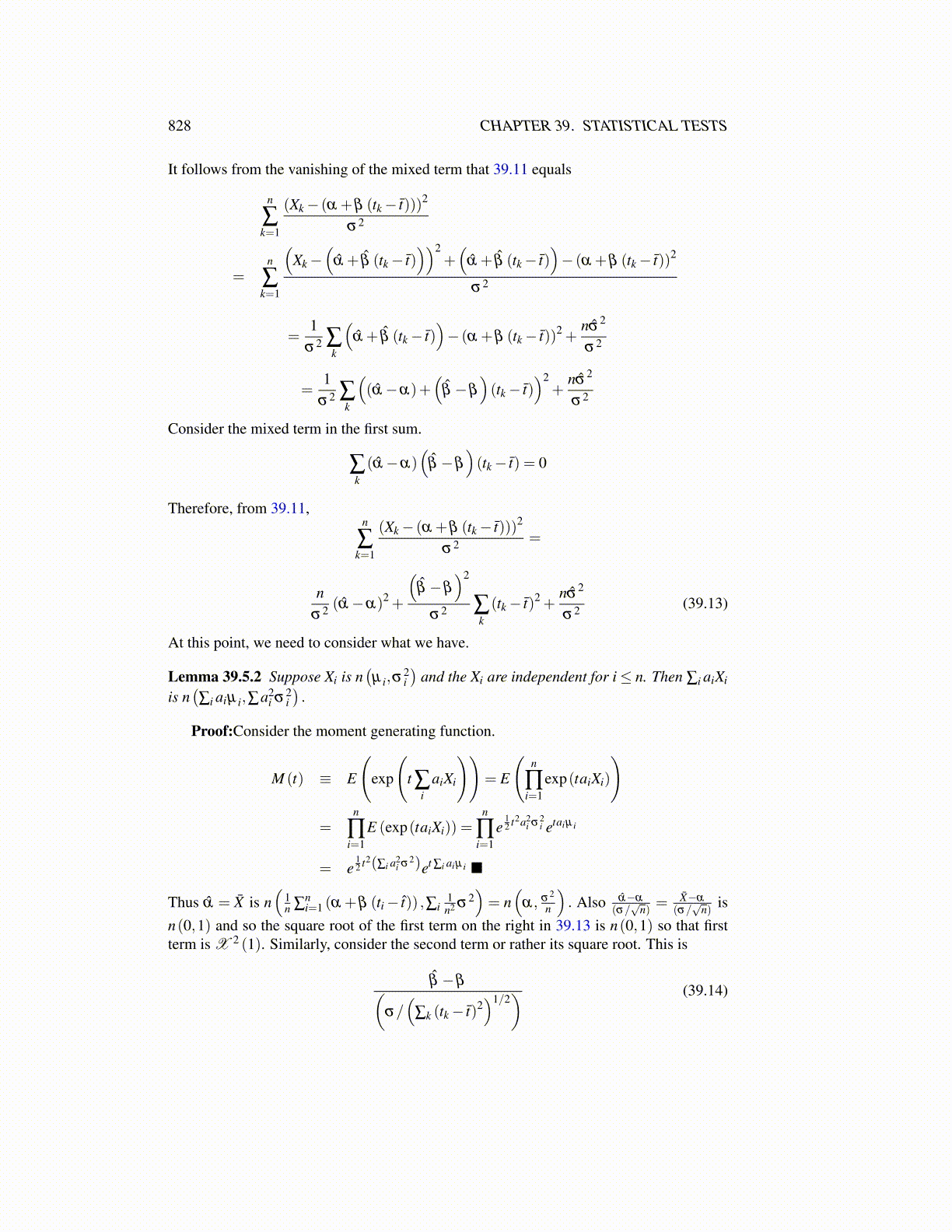
828 CHAPTER 39. STATISTICAL TESTS
It follows from the vanishing of the mixed term that 39.11 equals
n
∑k=1
(Xk− (α +β (tk− t̄)))2
σ2
=n
∑k=1
(Xk−
(α̂ + β̂ (tk− t̄)
))2+(
α̂ + β̂ (tk− t̄))− (α +β (tk− t̄))2
σ2
=1
σ2 ∑k
(α̂ + β̂ (tk− t̄)
)− (α +β (tk− t̄))2 +
nσ̂2
σ2
=1
σ2 ∑k
((α̂−α)+
(β̂ −β
)(tk− t̄)
)2+
nσ̂2
σ2
Consider the mixed term in the first sum.
∑k(α̂−α)
(β̂ −β
)(tk− t̄) = 0
Therefore, from 39.11,n
∑k=1
(Xk− (α +β (tk− t̄)))2
σ2 =
nσ2 (α̂−α)2 +
(β̂ −β
)2
σ2 ∑k(tk− t̄)2 +
nσ̂2
σ2 (39.13)
At this point, we need to consider what we have.
Lemma 39.5.2 Suppose Xi is n(µ i,σ
2i)
and the Xi are independent for i≤ n. Then ∑i aiXi
is n(∑i aiµ i,∑a2
i σ2i).
Proof:Consider the moment generating function.
M (t) ≡ E
(exp
(t ∑
iaiXi
))= E
(n
∏i=1
exp(taiXi)
)
=n
∏i=1
E (exp(taiXi)) =n
∏i=1
e12 t2a2
i σ2i etaiµ i
= e12 t2(∑i a2
i σ2)et ∑i aiµ i ■
Thus α̂ = X̄ is n(
1n ∑
ni=1 (α +β (ti− t̂)) ,∑i
1n2 σ2
)= n
(α, σ2
n
). Also α̂−α
(σ/√
n) =X̄−α
(σ/√
n) isn(0,1) and so the square root of the first term on the right in 39.13 is n(0,1) so that firstterm is X 2 (1). Similarly, consider the second term or rather its square root. This is
β̂ −β(σ/(
∑k (tk− t̄)2)1/2
) (39.14)